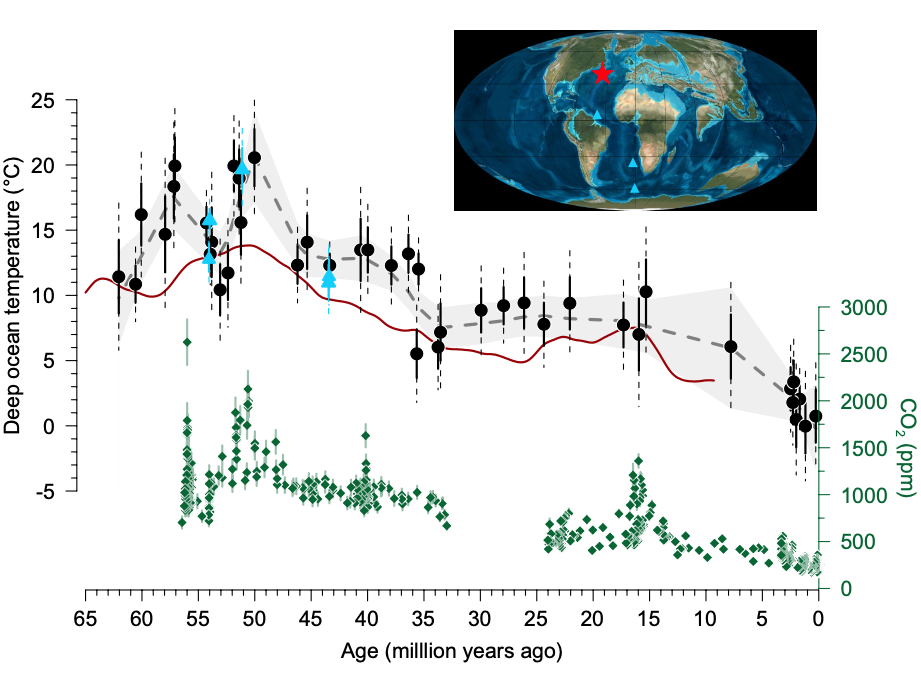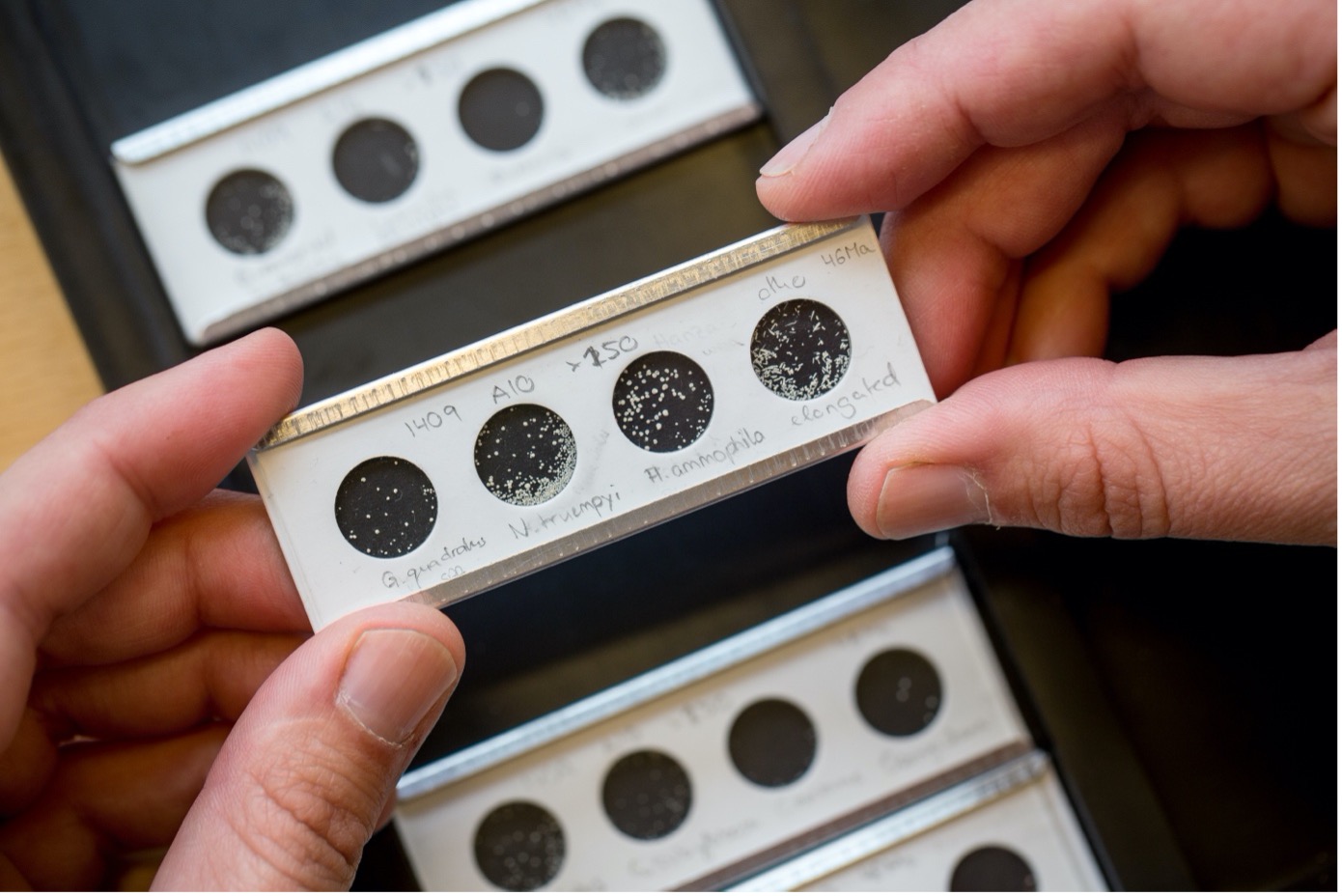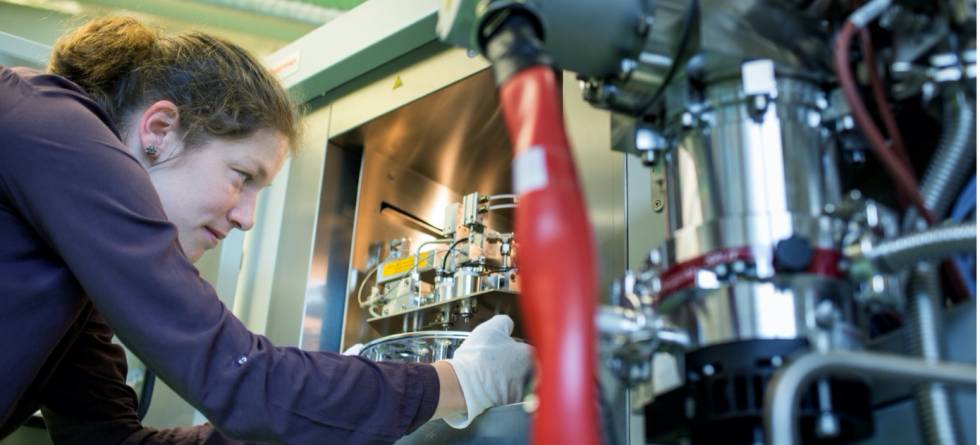A new study in Science Magazine reveals that the deep Atlantic Ocean has seen warmer temperatures and larger variability in temperature than previously thought – reaching temperatures of close to 20 degrees Celsius around 50 million years ago – close to what the Mediterranean is at surface level today.
Previously available reconstructions suggested that deep ocean temperatures have been more stable and colder.
“It shows the need for new ways to investigate climate this far back in time,” says Professor Nele Meckler, with the University of Bergen and the Bjerknes Centre for Climate Research.

Figure: Clumped isotope-based reconstruction of deep ocean temperatures in comparison with classical foraminifera isotope records. The dark red line showing temperature represents the understanding in more traditional methods (d18O), while the dotted line and the black and blue symbols show estimates from the new method.
“We thought we knew the deep ocean temperatures from using more traditional methods, but then this new view emerged from our data, based on a method that needs fewer assumptions. This shows that some of the assumptions needed for the classical methods need reassessment and means our field of research needs to think anew.”
With researchers from The Open University, Utrecht University, University of St. Andrews, University of California Los Angeles and ETH Zürich, the University of Bergen have used a new method on old material, to reassess the benchmark time series for deep ocean temperature across the last 65 million years – the Cenozoic era.

The clumped isotope method (see fact box) takes a closer look at the chemical composition of microfossils of foraminifera, single-celled microorganisms that live in the ocean. Using clumped isotope thermometry, they analyse the distribution of isotopes in the shells, which can be used as thermometer to reconstruct ocean temperatures at the time the organisms lived.
The results show that large changes in deep ocean temperature happened in intervals of less than 500,000 years. “In a geological perspective, that’s quite fast,” says Meckler, smiling.
Temperature estimates from these analyses show overall much warmer deep water compared to the reconstructions available so far. This, the researchers state, raises the need to reassess the Cenozoic history of ocean temperatures. It could also have implications for our understanding of the sensitivity of ocean temperatures to atmospheric CO2 concentration, which was very high during this time.
“We can only speculate why these changes happened based on these first reconstructions, they open a large number of questions,” says Meckler, stating the need for more data.
“Robust climate data such as this also helps test climate models, to see if they catch changes such as this.”
Reference
Meckler, A.N., Sexton, P.F., Piasecki, A.M., Leutert, T.J., Marquardt, J., Ziegler, M., Agterhuis, T., Lourens, L.J., Rae, J.W.B., Barnet, J., Tripati, A., Bernasconi, S.M. (2022):
Cenozoic evolution of deep ocean temperature from clumped isotope thermometry, Science.
DOI: https://doi.org/10.1126/science.abk0604

